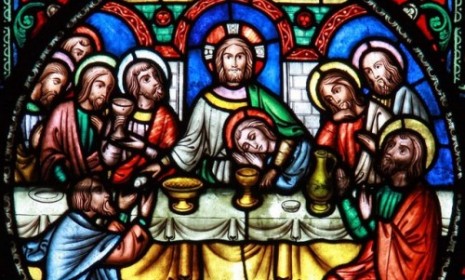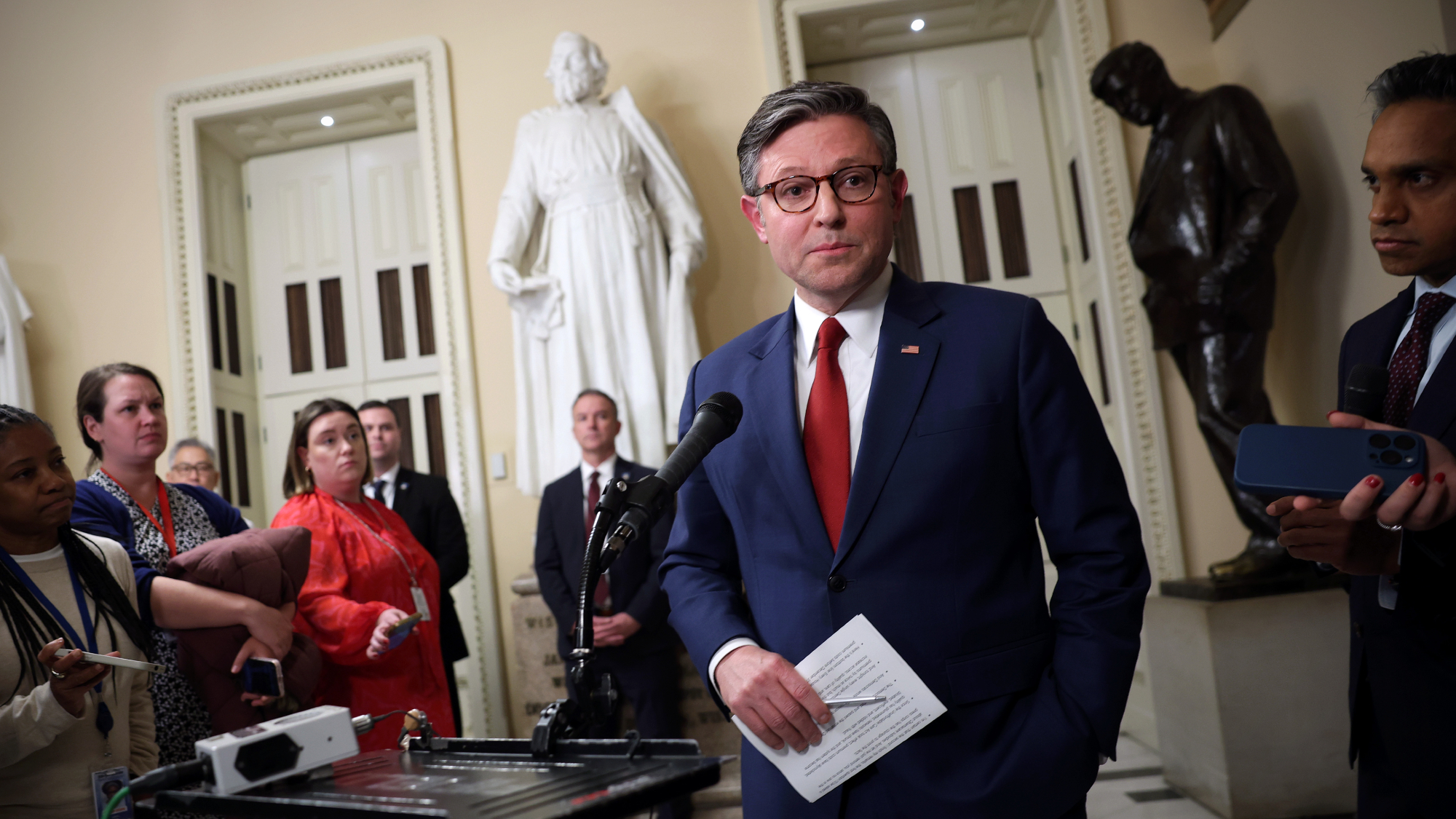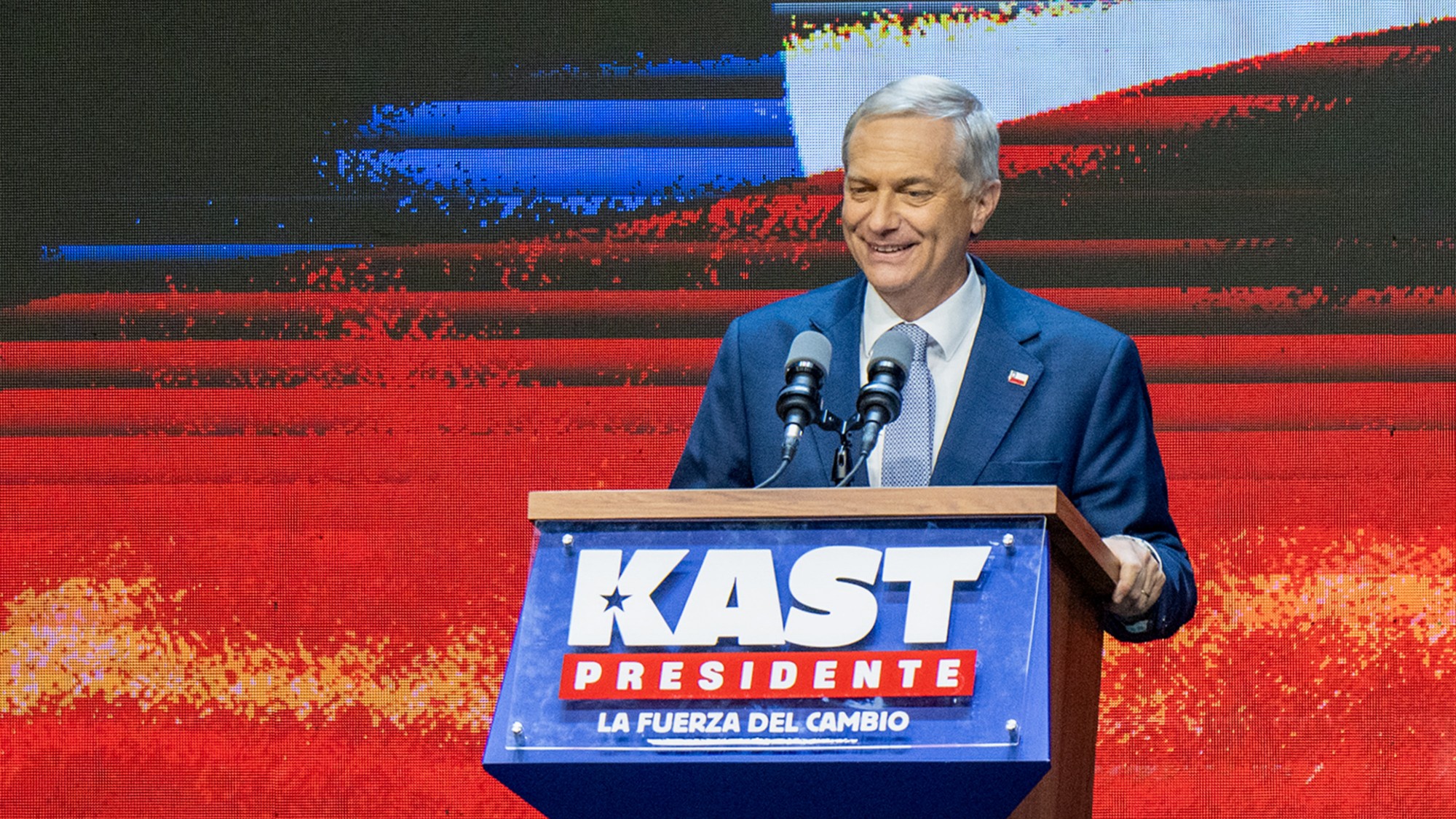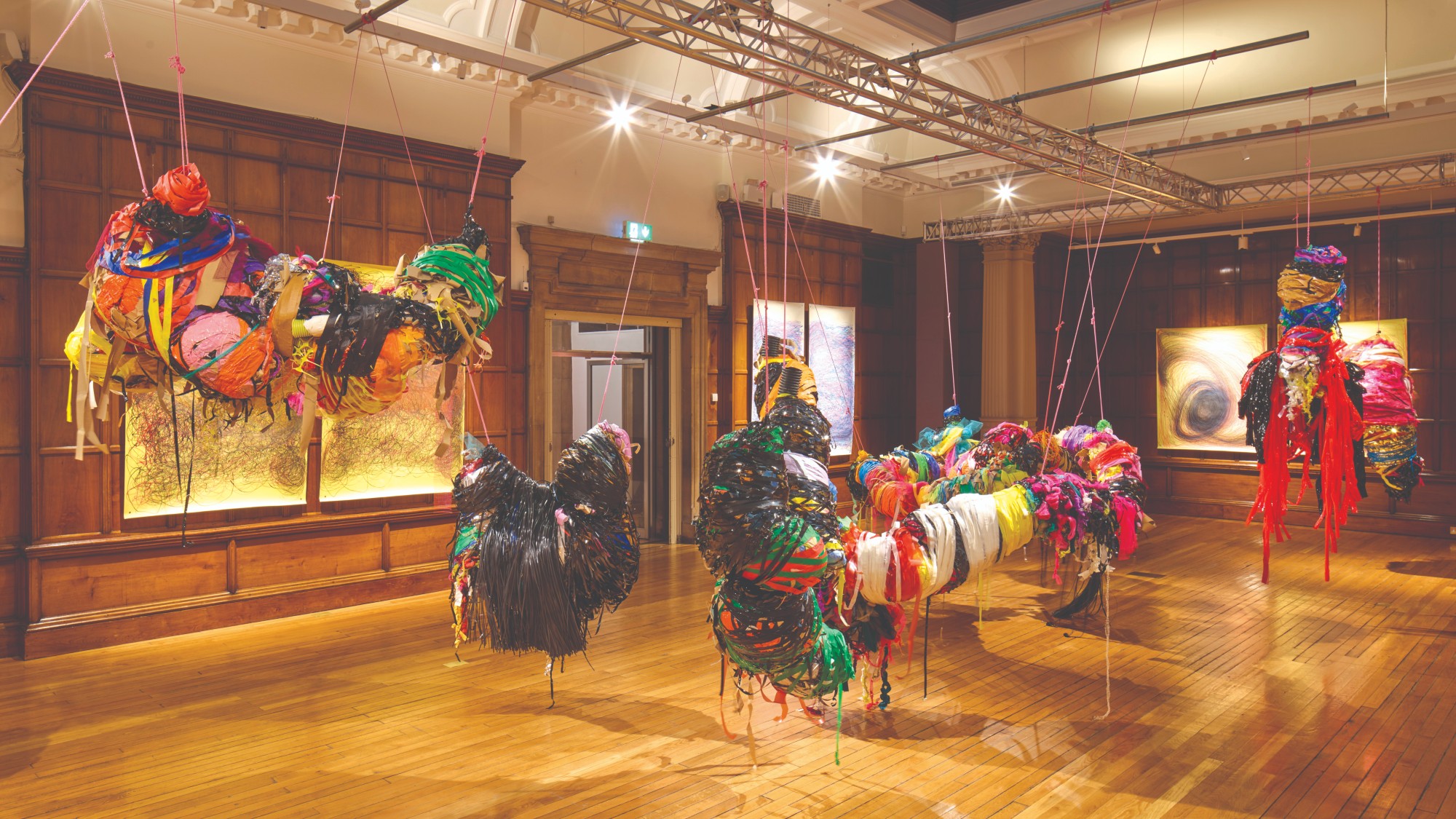Jesus' ever-fatter Last Suppers: 5 Theories
Obesity scholars say the portions at Jesus' much-painted Last Supper have ballooned over the last 1,000 years. What does that tell us?

By examining 52 paintings of Jesus' Last Supper, scholars have determined that "portion distortion" — the modern phenomenon of ever-expanding serving size — has been going on for at least a thousand years. Cornell University obesity expert Brian Wansink and his brother Craig Wansink, a Biblical scholar, found that the main course at the iconic meal grew 69 percent larger in the period from 1000 to 2000 A.D.. (Watch Rachel Maddow's take on the Last Supper.) Here, five ideas of what the artistic "super-sizing" of the Last Supper could mean:
1. It explains why we're getting fatter
This 1,000-year-long trend has clearly "changed our perception" of what constitutes a "normal" portion, says Weight Concern dietician Charlene Shoneye, quoted in BBC News. Larger servings have been shown to feed obesity — as proven by our massive 21st century waistlines.
The Week
Escape your echo chamber. Get the facts behind the news, plus analysis from multiple perspectives.

Sign up for The Week's Free Newsletters
From our morning news briefing to a weekly Good News Newsletter, get the best of The Week delivered directly to your inbox.
From our morning news briefing to a weekly Good News Newsletter, get the best of The Week delivered directly to your inbox.
2. Portion size isn't our only problem
Meals may have been getting bigger for the past 1,000 years, but Americans and other Westerners only "started becoming noticeably fatter in the 1980s," says Jacob Sullum in Reason. So if this study shows anything, it's that our ballooning portion sizes aren't the sole cause of our "obesity epidemic."
3. There's just more food in the world now
"Art imitates life," says Brian Wansink, quoted in NPR. "The last thousand years have witnessed dramatic increases in the production, availability, safety, abundance, and affordability of food," and so it's natural that "these changes have been reflected in paintings of history's most famous dinner."
A free daily email with the biggest news stories of the day – and the best features from TheWeek.com
4. We've all become foodies
Maybe "people just became more interested in food" in recent centuries, says Craig Wansink, quoted in BBC News. Certainly there's "no religious reason why the meals got bigger." Case in point: Leonardo da Vinci's 1498 Last Supper party "was more lavishly fed" than older versions that portrayed the first Christians as ascetics. And a hundred years later, Tintoretto "piled the food on the apostles' plates still higher."
5. Jesus didn't eat McNuggets
Sure, portion size is important — but look what Jesus ate, says Susan Albers in Psychology Today. Fish, bread, and wine. If scholars look back at images of our family parties 200 years from now, they'll not only see huge portions but also "mindless" piles of artificial and "highly addictive" junk food that Jesus wouldn't have touched.
-
 House GOP revolt forces vote on ACA subsidies
House GOP revolt forces vote on ACA subsidiesSpeed Read The new health care bill would lower some costs but not extend expiring Affordable Care Act subsidies
-
 ‘Kast’s victory is a political and ethical earthquake’
‘Kast’s victory is a political and ethical earthquake’Instant Opinion Opinion, comment and editorials of the day
-
 Turner Prize 2025: ‘artistic excellence’ or ‘cultural nonsense’?
Turner Prize 2025: ‘artistic excellence’ or ‘cultural nonsense’?Talking Point Work by the four artists nominated for this year’s award is on display at Bradford’s Cartwright Hall